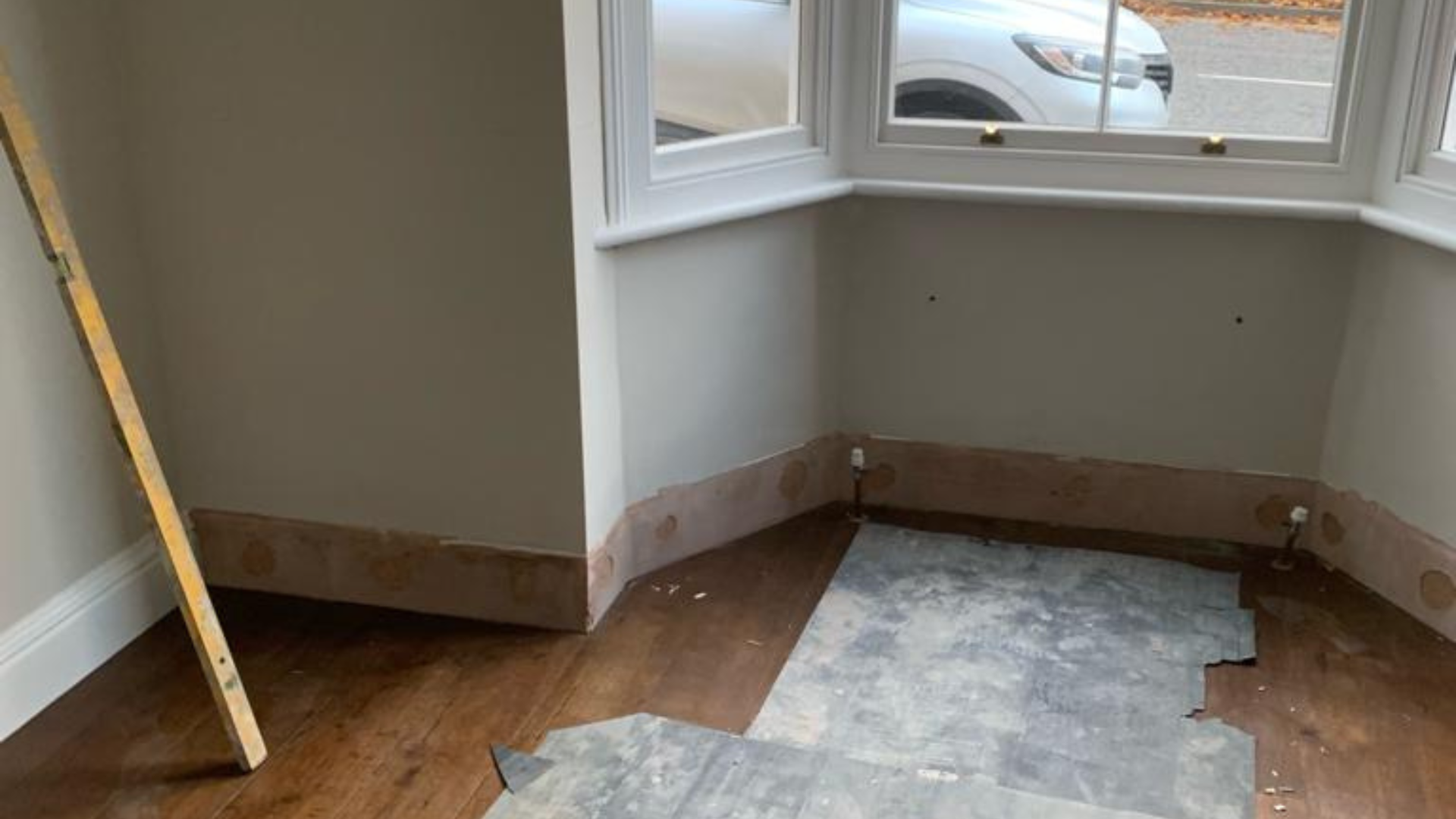
Location: Brackley
Type of property: Victorian
Services used:
Materials Used:
Problem: Suspended wooden floors in Victorian brick built house with poor subfloor ventilation, causing cold spots along the bottom of the British gypsum plaster walls. Damp plaster left salt deposits which attracted further moisture from the atmosphere. The problem occurred beneath the front room bay window, a typical area for damp plaster and cold spots. Gypsum plaster itself can absorb moisture from the atmosphere and the source of damp, in this case the floor. Replacing it with membrane allows the walls to breathe by leaving a vapour barrier at the bottom of the wall, with the added bonus that membrane is technically a superficial product that does not damage the original structure of the building (a requirement in the case of listed buildings).
Works completed: We removed the damp plaster and replaced it with membrane and dry lining, thus solving the immediate problem. We also installed Delta ventilation strip along the bottom of affected walls, allowing room for moisture to escape into the room. Preventing further instances of damp we created sub floor ventilation, an important addition to allow moisture beneath the wooden floor to leave the fabric of the building. Externally we installed new passive air vents in the form of air bricks to allow even more moisture to escape via the outside of the building.
Before
During
After
